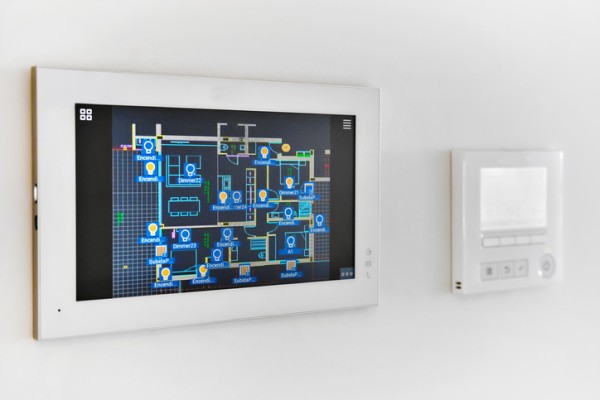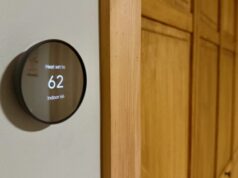
Automated lighting control goes beyond smart switches—it’s a sophisticated system that integrates lighting, curtains, and even daylight to elevate your home’s comfort, ambience, security and energy efficiency. Systems equipped with sensors can dim or switch off lights and adjust shading based on daylight levels, time of day or occupancy.
Different types of lighting control
Automated lighting control isn’t a one-size-fits-all solution. Systems range from basic DIY devices you can pick up at hardware or electronics retailers to fully integrated, professionally designed systems. Here’s how they compare.
DIY retail products
Entry-level automation is readily available from stores like Bunnings or JB Hi-Fi. These products, often Wi-Fi-enabled smart globes, plug-in timers or app-based switches, are designed for easy setup without specialist skills. While affordable and convenient, they typically have limited expandability, may rely heavily on cloud services, and can be less reliable for large-scale or critical applications.
Electrical contractor–grade systems
The next tier involves systems installed by licensed electricians, often using wired control protocols like C-Bus or DALI. These are designed for long-term reliability, larger-scale coverage and better integration with other electrical systems in the home. They require professional installation, can support complex lighting zones and scenes and often allow for more robust wall switch or touch panel control.
Smart home integrator/CEDIA-level solutions
At the top end are systems specified and installed by accredited smart home integrators, often members of CEDIA (Custom Electronic Design & Installation Association). These solutions integrate lighting with audio-visual, security, HVAC and shading systems through a single control interface. They typically use advanced programming, centralised control processors and high-quality hardware to deliver a seamless, future-proof smart home experience. While this level of automation comes with a higher cost, it offers unmatched flexibility, reliability and customisation.
Key benefits
- Ambience and convenience: Use intuitive preset scenes like Welcome Home, Goodbye and Goodnight to instantly orchestrate lighting, curtains, security, heating/cooling and more via one tap.
- Energy efficiency: Let daylight regulate your lighting automatically, reducing reliance on artificial lighting and trimming utility costs.
- Security and peace of mind: Automated scenes can mimic occupancy when you’re away, and ensure lights are turned off when not needed, enhancing both safety and savings.
Automated lighting control delivers convenience, comfort and energy management—all integrated through a Building Management System (BMS) that simplifies your whole-home experience.
Why work with a qualified specialist?
Installing an automated lighting system is a significant investment. Collaborating with experienced system designers or integrators ensures you avoid common pitfalls, like overpaying for features you won’t use or compromising on scalability. Look for providers with strong references and flexible solutions that can evolve with your home.
Summary
Automated lighting systems bring unparalleled convenience, energy savings and control. To get the most out of yours, engage a professional who can design a system that’s easy to use now and flexible for the future.





